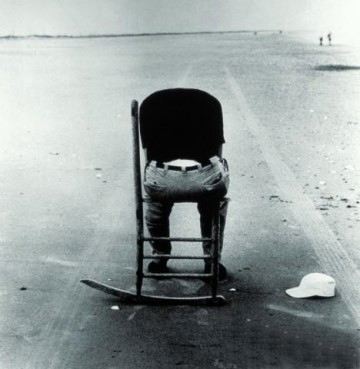In this case it was the main up front presenting problem which he sought counselling for. Most often PE will arise as a kind of side issue raised by the man a few weeks or months after counselling has commenced. This may be because he is embarrassed about it and hence procrastinated about bringing it up or it may be that it is seen as less of a problem. In this case it was brought up near the end of the first session after much struggle. He was clearly distressed by it much more so than one usually finds.

To my mind the whole area of PE is a dodgy one. It is included in the mainstream literature on abnormal states. Indeed the DSM-IV has it there included with all the other sexual dysfuctions. However unlike some of the other dysfunctions listed it is based on an assumption. The assumption that good, correct, normal, psychologically OK sex has to involve intercourse. This need not be so at all. Emotionally and physically satisfying sexual contact between two consenting adult does not have to involve intercourse.
So why does this assumption exist? I can think of three possible reasons.
1. Biologically the reason for having sexual contact is for procreation and thus intercourse is required.
2. Historically religion has had some clear views on the purpose of sexual contact and the sin that comes from simple pleasure of the flesh.
3. Historically psychologists have defined healthy sex in such a way that intercourse is required. Sex without intercourse has historically been defined as a psychologically abnormal act. Now it becomes clear why I wrote the previous post - Sexual repression (Part 1) - where I address this precise point.

In the DSM-IV the diagnostic criteria for PE includes two points.
1. Ejaculation after minimal stimulation and before the person wishes it
PLUS
2. Marked distress caused by this.
Thus the DSM is at least partly agreeing with the point I am raising here. The premature ejaculation itself is not considered a problem. It must also be accompanied by psychological distress.
That distress will be caused sometimes because of the assumption I have just described. If one removes the assumption there is not going to be so much distress if any at all.
The problem I have with the DSM-IV and hopefully this will be changed in the DSM-5 is the title of the disorder. It is titled - Premature ejaculation - which is a misnomer. This title implies that it is simply the premature ejaculation that is the problem regardless of the distress or lack of it. It would be more aptly named, ego dystonic premature ejaculation. This is more accurate and would also help people like my client when they come across statements about abnormal psychology such as found in the DSM.

The suggested title comes from the DSM-III. This book published in 1980 included the category, ego dystonic homosexuality. As late as the 1970s homosexuality was still considered an abnormal psychological state in the mainstream literature. In its efforts to extract homosexuality from the pages of the texts on abnormal states the DSM chose this interim measure and coined the condition - ego dystonic homosexuality. By the time the DSM-IV arrived in 1994 even that had disappeared and mainstream literature no longer viewed homosexuality as an abnormal state.
Treatment
Back to the point at hand about PE. The manuals on the treatment of PE invariably focus on behavioural methods such as the stop and squeeze technique. Whilst certainly useful in some cases, I also suggest working on the assumption the man has in his Parent ego state, that ‘proper’ sexual contact must include intercourse. I cannot recall ever seeing such a proposal in a PE treatment manual. If the Parent ego state belief about ‘proper’ sex can be altered this can significantly disempower the PE problem in the man’s mind,. If that occurs then any technique like the stop and squeeze method is more likely to be successful and even if it isn’t that doesn’t matter anyway.
Thus we have addressed the behavioural treatment and changing the Parent ego state assumption about ‘proper’ sex. Also often apparent is some kind of Child ego state decision. With my client this was the case. His distress was based on his Child belief that the PE meant he could not function properly as a male. Thus it brought his sense of his maleness into question and this was what was so distressing for him.

There can be many other Child ego state beliefs related to the PE. There may have have been some kind of sexual assault on him as a child or ridicule by his peers that related to sexual matters when engaged in sex play and experimentation as a child. Indeed sometimes PE is an aggressive act against the woman - “I am going to satisfy myself and not you”.
However despite all this, if one chooses not to accept the assumption aforementioned then PE as a problem ceases to exist.
Graffiti
Basically I think you are saying redefine your assumptions so that your originally perceived issue/ problem is no longer defined as such.
ReplyDeleteCan we not do that for everything that irks us and then we would not have any more problems.
Hello Kahless,
ReplyDeleteYou have anticipated where I was likely to go in my next post about problems, therapy and assumptions. You must be a forward thinker my pommy friend.
The short answer
One can do that to some problems and not others
Graffiti
This comment has been removed by the author.
ReplyDelete